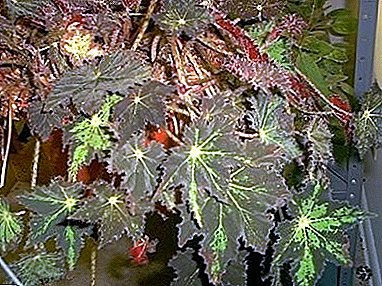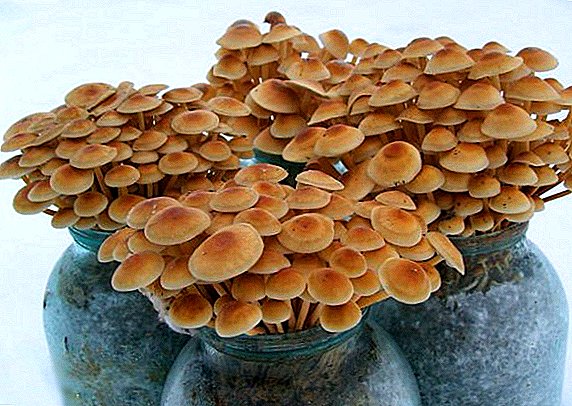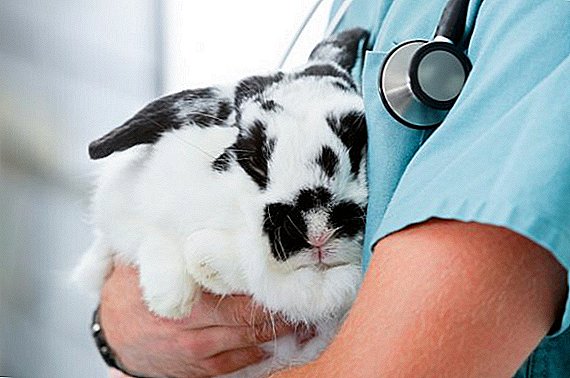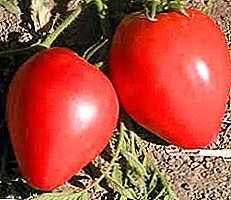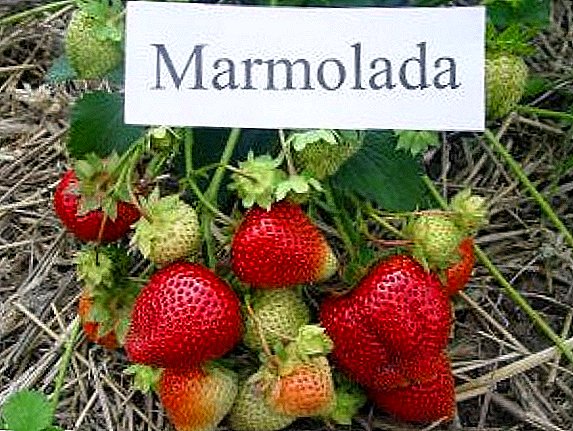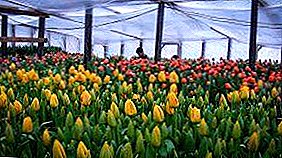
Symbol of spring and women's holiday, one of the first flowers in the garden and one of the most beautiful and touching - tulip. He is loved not only by women, florist, but also by breeders.
The proof is a huge variety of its species and colors. Perhaps no gardener does not overlook this wonderful, very delicate flower.
Pluses greenhouses
Grow tulips in the greenhouse - simple taskif you know the technology and strictly follow it. If you love these flowers and want to make money, then greenhouse cultivation is for you. If you like to tinker with flowers in general, to be engaged in selection - this is where you can start and make your hobby.
This method of cultivation allows you to get flowers at any time of the year, and yes even podgadat for the holidays, when they traditionally in demand. In order to get beautiful and diverse flowers, several conditions must be met. This is the choice of variety, planting material and compliance with the technology of growing tulips in the greenhouse.
 Learn all about how to make a festive bouquet varied and to please your loved ones with fresh flowers from the greenhouse.
Learn all about how to make a festive bouquet varied and to please your loved ones with fresh flowers from the greenhouse.We offer you detailed materials on how to grow roses and chrysanthemums in the greenhouse.
Planting material
How to grow tulips in a greenhouse? To get strong beautiful flowers, it is important to choose the right and prepare planting material. Where to get the bulbs? Tulip bulbs are now sold in stores, nurseries or just private individuals - gardeners who breed them.
 Buying bulbs is best from July to mid-September. It is guaranteed to be bulbs of the current year. With that, the earlier you do this, the more high-quality planting material you will receive, until it is disassembled by more agile flower growers.
Buying bulbs is best from July to mid-September. It is guaranteed to be bulbs of the current year. With that, the earlier you do this, the more high-quality planting material you will receive, until it is disassembled by more agile flower growers.
For what note when buying bulbs:
- scale density and thickness. If it is very dense, dark brown, this may be a sign that it is overexposed in the soil;
- the ideal bulb in diameter is 3.5-4 cm. You can take a slightly smaller size, but not necessarily a healthy bulb;
- appearance. The bulb must be intact, with no traces of mold, which began to grow in the stem (only its small nose should stick out);
- bottom condition. There should be only bumps from which the roots will sprout, the bottom should be dense;
- bulb weight. If the bulb seems to be easy for its size, then it is rotten.
To avoid buying low-quality planting material can grow bulbs by myself. It is best to take them from flowers growing in open ground. To do this, 2-3 days after the start of flowering blooming flowers need to be cut.
Do not cut buds, it is fraught with the cessation of growth of deciduous mass and a decrease in the accumulation of necessary organic substances.
It is necessary to dig out the bulbs in late June - early July, after 2/3 of the stem and leaves turn yellow. Suitable for forcing the bulbs are only round in shape, measuring 3.5-4 cm in diameter (of a smaller size, for example).
Onions disassembled by size: 1st parsing - the largest 2nd parsing - smaller, etc. Peel them to make sure they are healthy. In addition, peeled receive more nutrients and moisture.
How to store the bulbs?
From the correct storage depends on the quality of future colors. In order to form organs in the bulb and accumulate the substances necessary for growth and subsequent flowering, the bulbs are stored for the first month at 20 ° C, then it can be reduced to 17 ° C.
Humidity no less important than temperature, the bulbs should not dry out. Keep level not less than 70-75%. Containers should be ventilated, for example, boxes with a mesh bottom.
Landing for forcing
 How to grow tulips in a greenhouse? Before planting for two weeks, the bulbs should be kept at + 9 ° C. Peel the scalesto give maximum access to nutrients. If there is a lot of planting material, clean only the root bumps.
How to grow tulips in a greenhouse? Before planting for two weeks, the bulbs should be kept at + 9 ° C. Peel the scalesto give maximum access to nutrients. If there is a lot of planting material, clean only the root bumps.
To prevent possible infections before planting the bulbs need to be processed. For disinfection can be used simply hot water, but not more than 40 ° C. Also suitable solution of potassium permanganate (weak) or broth celandine.
The substrate is poured into the landing capacity with a layer of at least 10 cm. The bulbs are deepened by 3-4 cm with a slight pressure and are poured from above with the substrate.
Tulip is remarkable because for its cultivation no powerful lighting required. The density of planting can be 250-300 pieces per 1 square. The landing can begin at the end of August. Its time depends on which date you want to receive blooming tulips.
The soil
Traditional tulip substrate - a mixture of sand (river) and sawdust. Flowers are quite patient with a lack of nutrients, but they do not tolerate excessive moisture. Therefore, the soil should be well drained. For disinfection is not superfluous steam it at 80 ° C and shed fungicide. The soil should be neutral in acidity.
Cooling
Tanks with planted bulbs are maintained at a temperature of 7-9 ° C for 13-20 weeks.
During this time, the seedlings are watered, and the desired humidity level is set in the room. To maintain a high level of humidity in the greenhouse, it is necessary to water the floor and walls 2 times a week. During cooling lighting should be minimalBest of all, the room was dark.
Tulip Distillation
The cooling period is over, the actual distillation begins.
Temperature conditions
How to kick tulips in the greenhouse? Begin gradually raising the temperature in the greenhouse. For several days, it should be kept at a level of 12-14 ° C, then increase to 16-18 ° C during the day and 14-15 ° C at night. When the buds appear, you need to reduce the temperature to 15 ° C. This will make their color more saturated, stalks stronger and longer. If you need to hurry flowering for 2-3 days, you can raise the temperature to 20 ° C.
Lighting
 The first days of forcing large lighting is not necessary. With a height of shoots of 6-7 cm, the lower threshold of illumination will be 900 lux. In February, tulips it is necessary to extend the light day till 10-12 o'clock with the help of fitolamps placed in half a meter above the landings.
The first days of forcing large lighting is not necessary. With a height of shoots of 6-7 cm, the lower threshold of illumination will be 900 lux. In February, tulips it is necessary to extend the light day till 10-12 o'clock with the help of fitolamps placed in half a meter above the landings.
Watering
Landings are watered early in the morning every day. Use cold water (+ 8-12 ° C). Very good melt watercontaining the minimum amount of impurities. Avoid getting water on the leaves. The first week, regular watering can be alternated with a solution of calcium nitrate (0.2%).
Top dressing
The forcing period is too short to carry out full fertilization of the soil - it does not have time to digest. You can feed a couple of times with a special liquid fertilizer for bulbous plants.
Distillation of tulips in the greenhouse for March 8
How to grow tulips in the greenhouse by March 8? If you grow tulips in a greenhouse, it’s a sin not to match their flowering to the “tulip” holiday itself - March 8. For beginners, growing tulips in a greenhouse by March 8 is the first serious test to be done on time.
Required time to bookmark time. How many tulips grow in the greenhouse? The calculation of the time the bulbs are laid for cooling is simple. You need to cut the flowers on March 7th. From this date, subtract 21 days - this is the time of growth in the greenhouse, from the received date again subtract 16 weeks - the time for cooling and germination of the bulbs. The result is that plant bulbs need October 26.
How to cut?
Cut tulips it turns out not such a simple matter. It depends on the further development of the bulb, which will go on planting material for the next season.
If cut too low and not leave enough leaves, it will affect the accumulation of necessary mineral salts for the further development of the flower.
The bulb crushes and becomes unsuitable as a planting material. For tulips under the cut better to take long-stem varieties. If the question of planting material is not worth it at all, then it is better to pull the plant along with the bulb.
Nowadays, a bouquet of tulips in a vase with solid, well-washed bulbs is considered a fashionable design move. Needless to say it's significantly prolong life cut off flowers.
Variety selection
 Varieties of tulips for distillation are selected depending on the required timing of flowering and destination - for breeding or for sale.
Varieties of tulips for distillation are selected depending on the required timing of flowering and destination - for breeding or for sale.
There are varieties of early forcing, middle and late. Recommended varieties for early forcing (end of December), the class is simple early:
- Abba;
- Primavera;
- Zorro;
- Apricot beauty;
- Sunrise;
- Christmas Marvel.
For average distillation (from February 14 to 23), class Triumph:
- Kiss Nellys;
- Carola;
- Yearning;
- Abu Hassan;
- Gander.
For late forcing recommend (by March 8) varieties from the class of Darwin hybrids:
- Carnaval de Nice;
- Aristocrat;
- Parade;
- Davenport;
- Flaming Parrot.
Growing problems
Distillation problems may occur in case of violation her rules.
- Buds seem to be paper. Lower the temperature and regularly air the greenhouse.
- Drooping flowers indicate too high a temperature.
- Weak peduncles - night temperature exceeds the daytime, lack of calcium.
- Poor root rooting - too low humidity.
- Bulb rot after planting is too warm soil.
- Pasture only leaf without peduncle - too small bulbs planted.
A photo
Diseases of tulips during forcing in the greenhouse:

Growing tulips in a greenhouse is good business. There will always be demand for cut flowers. Quoting a famous millionaire, say: "Make a hobby a profitable business and you can never work." Good luck everyone!


